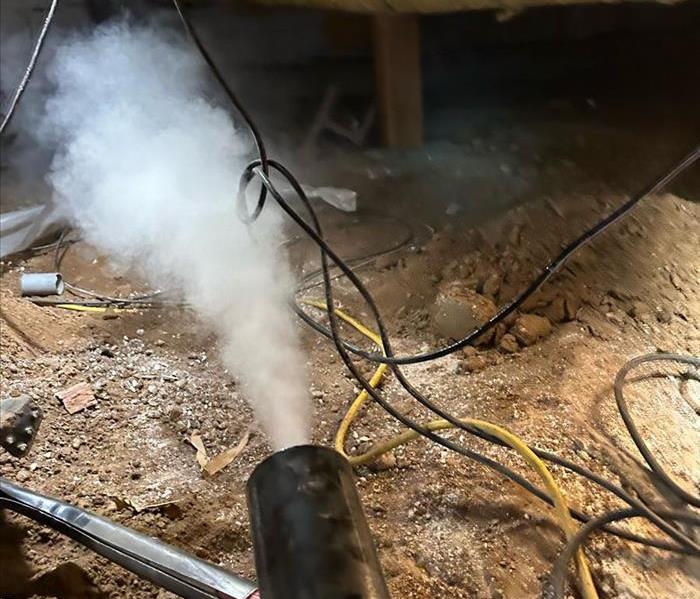Damp crawl space
2/23/2023 (Permalink)
Crawl space moisture is common, so don't sweat it. Expect your crawl space to get wet during hot and humid summer months, when precipitation is high. Moisture will condense on the crawl space walls and other materials inside. Depending on how humid the air is, puddles may form. Condensation in crawl space is a sign that you have a moisture problem. In general, condensation forms when the relative humidity in your crawl space reaches 100%. In other words, this is the point when the air can't hold moisture any longer. While a crawl space moisture problem can be complicated, the solution is fairly simple - seal the crawl space to keep out moisture from the outside air and soil and install a dehumidifier to control the humidity level. Using a dehumidifier will pull the moisture out of your crawl space air before it enters the rest of your home. You can install a crawl space barrier to eliminate odors. This prevents ground moisture from evaporating into your crawl space, which reduces your risk of odors from moisture, mold, or pests.
Moisture in your crawl space can lead to the growth and proliferation of mold. A wet crawl space is ideal for mold growth because of the presence of moisture. There’s also a lot of organic matter like wood that mold can feed on.
You’d be wrong to think that mold is harmless and only an aesthetic flaw. That’s because molded releases airborne spores into the air that find their way into your home. These spores can lead to a variety of respiratory complications, including allergic reactions and asthma attacks.
Don't let this disaster happen to you. Give us a call!






 24/7 Emergency Service
24/7 Emergency Service
